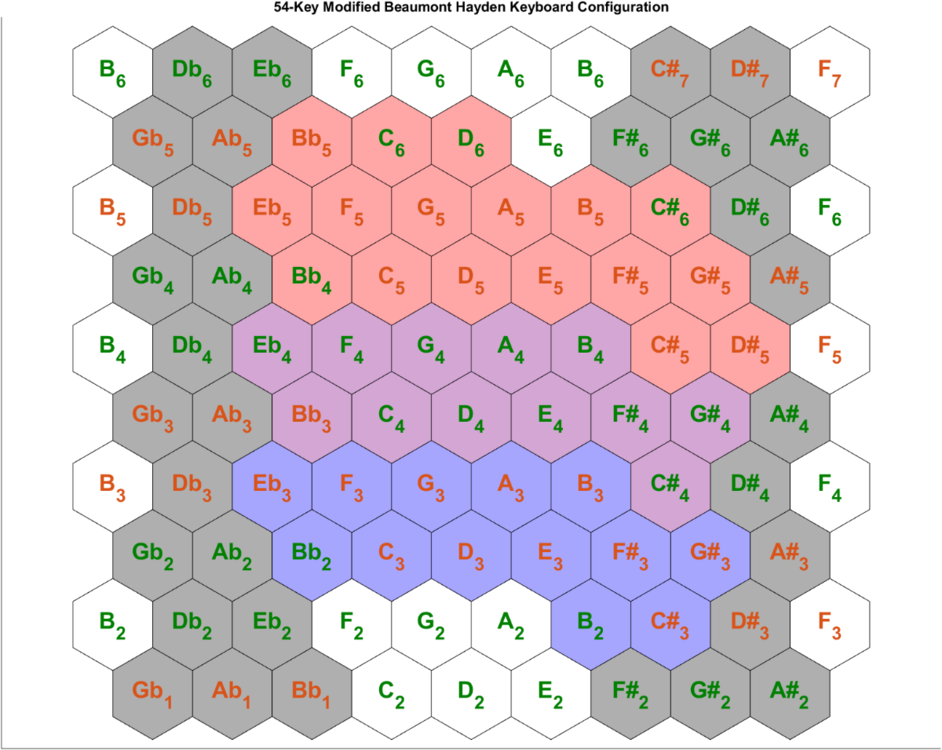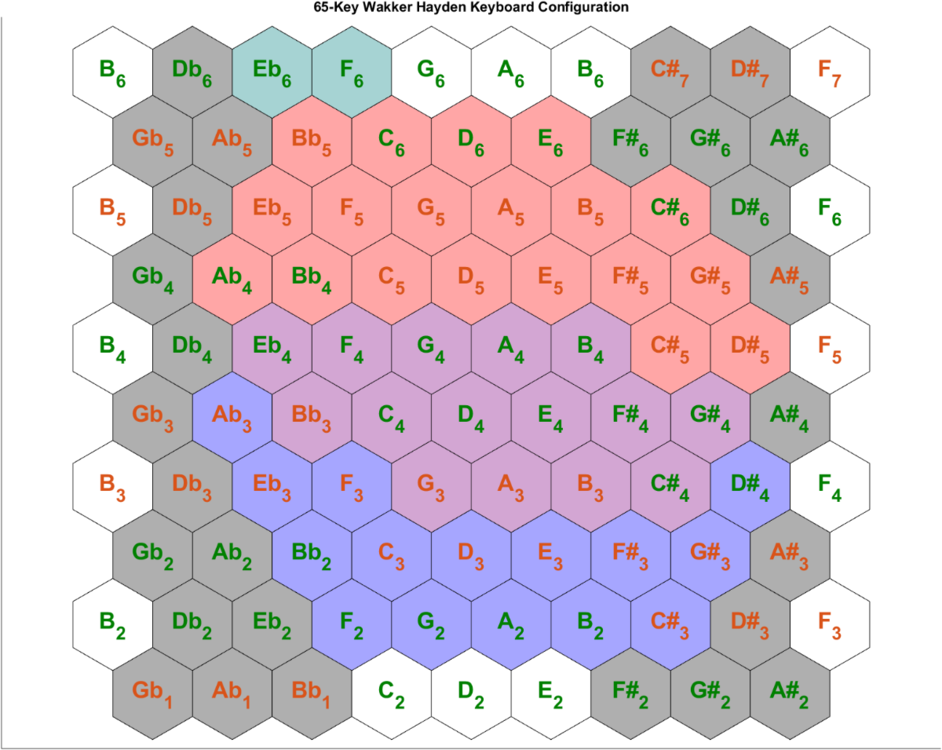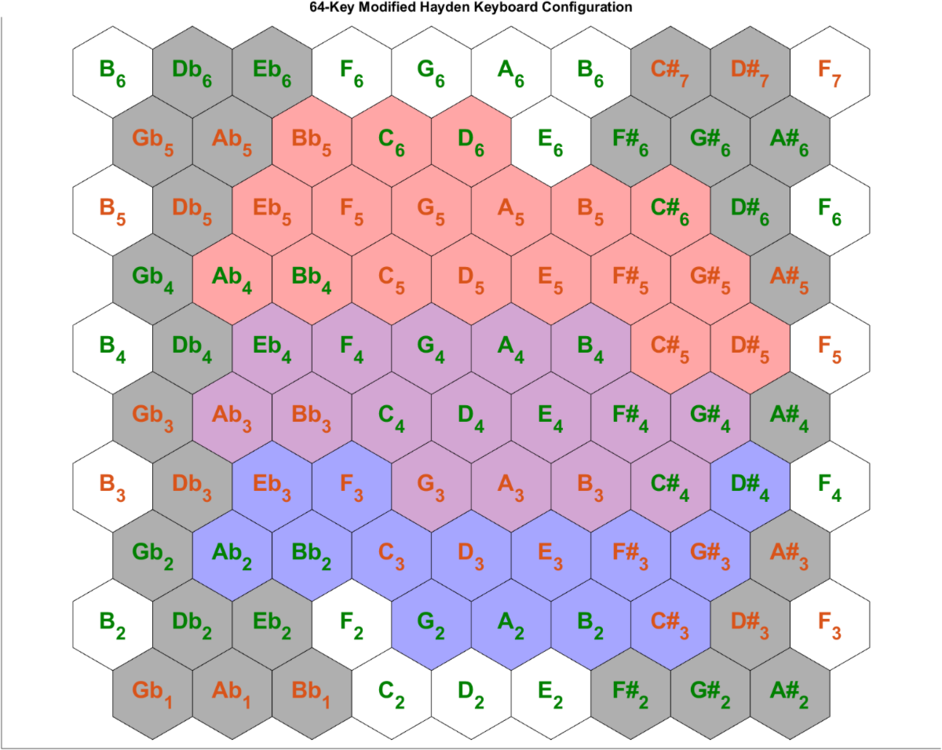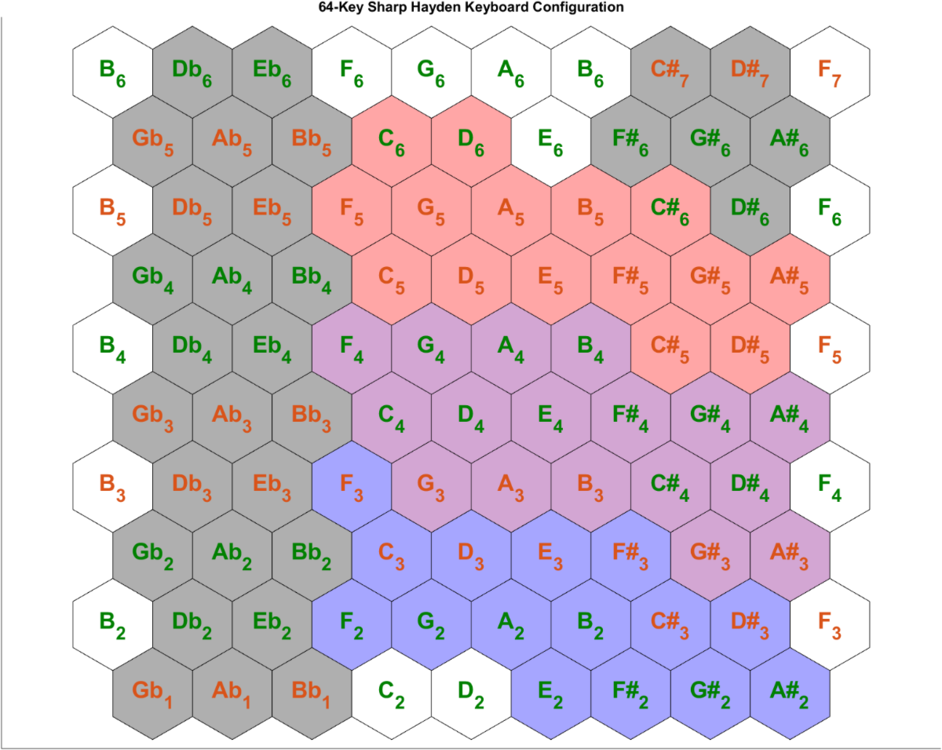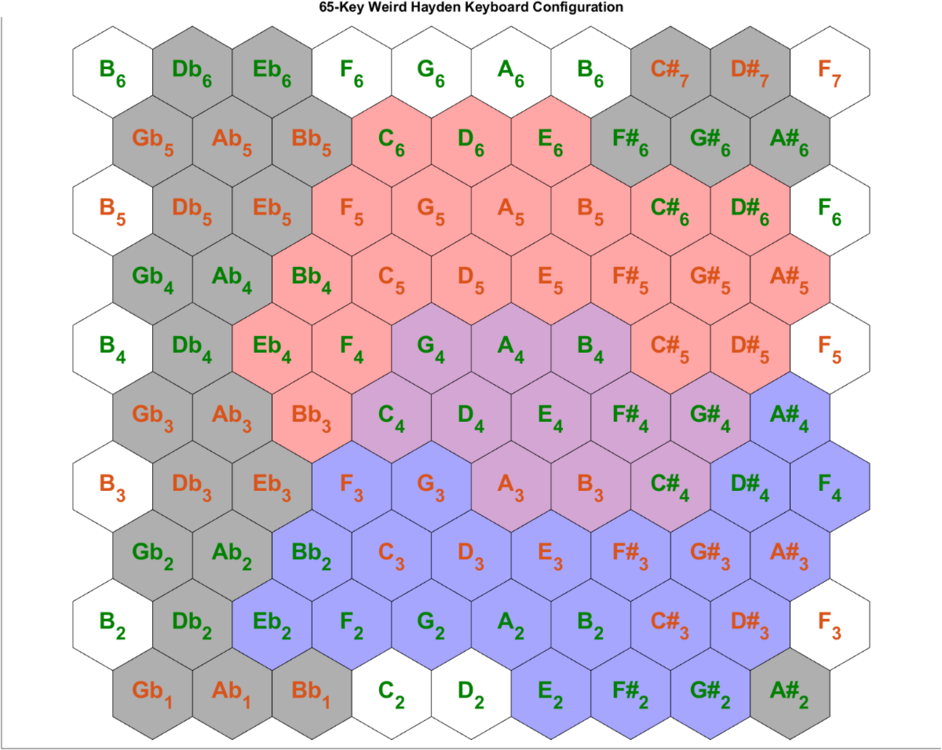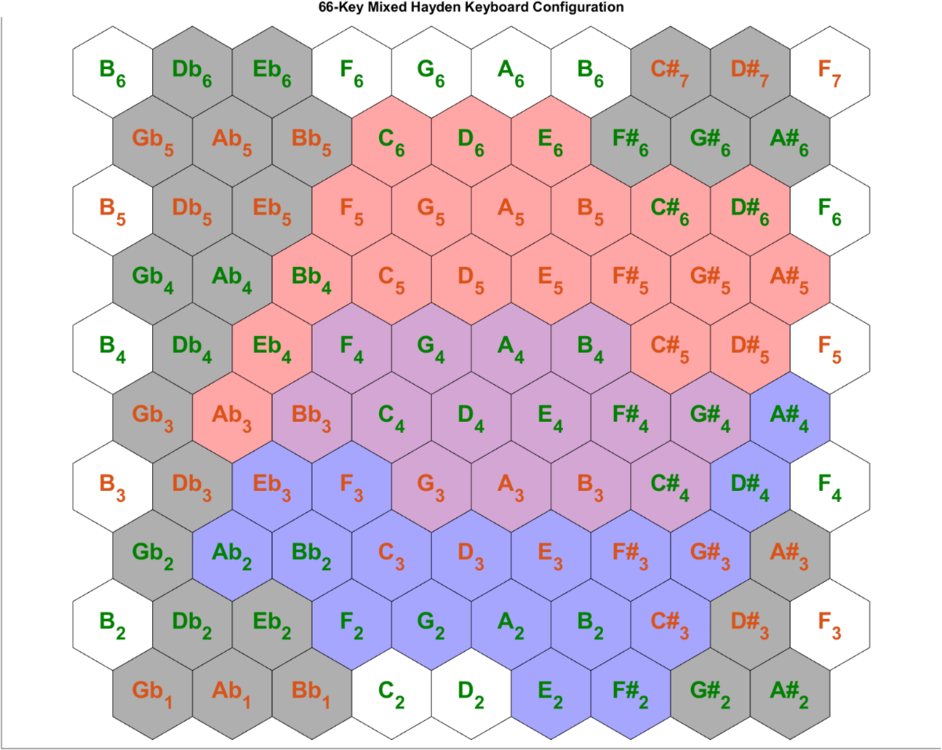Search the Community
Showing results for tags 'layout'.
-
Hello! Been reading obsessively for a little while, but now I finally decided to make an account so I could ask a few of my own questions! I recently got my first concertina, a Rochelle-2 Anglo, and I love it! The only problem is that my brain doesn't work that way, thus for me the Anglo system is surprisingly unintuitive. So, after talking a bit with a maker, I'm in the process of getting a Hayden Duet made! Only problem now is figuring out the keyboard... Before I bombard you with diagram-punctuated rambling, a little background: I'm a pianist, have been for most of my life. I've been fascinated by accordions and concertinas forever, but only recently realized I could just hop in whenever I wanted! There is no specific genre or genres I play, I'm all over the place, so versatility is important to me -however white and whaley that may be in such a compact instrument. Anyway, to the layouts! I started with the 52K layout from the Morse Beaumont, and seeing that the range had a couple holes at the bottom I added a low B and C# to make it chromatic: (right is red, left is blue, overlap is purple, and octaves have alternating green and orange labels) Then I tried eliminating the overlap by shifting the left hand down an octave, but when I tried to figure out how I would play a few songs on it I quickly understood how important that overlap is. So for a moment I thought this 54K layout was perfect, but then I got two thoughts in my head: The left hand doesn't go down very far, and it's missing Bb/A#4. So I started looking for other references for a Hayden layout and found the 65K layout used by Wakker: I found it interesting how the extra buttons were used as much to fill out the existing accidentals as they were to extend the range, and the more I learn about the Hayden layout the more that makes sense to me. But I see a lot of compromises here that I don't like: Missing F#2, G#2, and Bb4 on the left, G#3 on the right, the bisonoric Eb/F, and a lot of duplicated keys which, while great for transpositional invariance, could have been used to make it chromatic. (I actually don't know if Wakker uses linked buttons for duplicate notes, I wonder...) So I made a couple modifications: Much better for my purposes, but I still wasn't very happy with it. The left hand still didn't go quite as low as I wanted (E2 would be perfect), I had a few duplicate notes I wasn't sure would actually help, and I was starting to notice something else: The cut-down Hayden layouts tend to be very inconsistent from octave to octave. For instance, B major looks very different between B2 and B3 on the left. The example layouts I've found tend to exacerbate that problem more, and the way I've been adding notes tends to even it out, but you really can't get away from that problem completely without adding 19 buttons per octave! I tried to mitigate the non-uniformity by using only sharps, and seeing as I eliminated a lot of duplicates I extended the range down to E2: Now it's consistent, but no less limited. It breaks down with F major and the common Bb major, and fixing that uniformly would mean adding a lot of duplicates! Enter the weirdest and most interesting reference layout I've looked at: It's very sharp-biased but not totally, it has almost the range I want (both more and less), but it's... weird. I really don't like pushing the left F4 all the way over to the sharps, I don't need the low Eb, and I'd like fiddle G on the right. I ended up with this: I think this is the best tradeoff between range, uniformity, and isomorphism out of any of the layouts I've considered so far (while being totally chromatic so my brain doesn't get confused). I'm not sure about the high E and D#, I guess I'll have to figure out how significant those two reeds are for construction, but I don't see how I could improve this without adding way too many buttons or compromising the range. I also think ~64-66 buttons is approaching the edge of where I'm confident I won't get helplessly lost in the button field. So, my question: I'm still very new, so to those of you who play Hayden duet, what do you think of this? Am I making any big mistakes? Is there anything I'm not aware of or haven't thought of? ... do you like my graphs?
-
I have a wheatestone C/G anglo with the standard 30-button layout on which I play primarily irish music. I have seen some discussion on modified/hybrid layouts for ITM, but they have all been focused on the mid-range, usually focusing the C#. I am getting fairly comfortable with the wheatstone system in this sense, but there is one thing that has continued to bug me. I would really like to have the D below middle C to throw in chords. As it is I can throw in a nice low G, A or E and even the odd C, but the one I would get the most use out of for irish music woudl be that D. Does anyone have experience modifying the layout in this range? Are there any particular issues one might run into or reason's not to do it. I realize that there could be some issues with differently sized reeds on the low end. Here is the mod that seems the most obvious to me. Remove the low F natural on the pull (top row, far left) and replace that with the low G. (That low F is probably my least used button on the left hand side anyways). Then replace the existing low G pull (Mid row, far left) with a low D pull. It seems like this should be fine space-wise as the G should be the same length or shorter than the F, and the D would be on the same as the low C, so there should be room for it. Plus I think it should only require one new reed since the low-G would just be moved. Moreover this layout seems like it would have nice options for a DA fifth and and an inverted GD fifth on the pull in that leftmost column, As well as a nice D octave combo in the middle row. The lowG-mid D pull that I currently use on the pull would be slightly more awkward, but not prohibatively so. I would love to know if anyone has advice regarding either the ease with which I can find someone who make such a modification (It is beyond my own tinkering ability and comfort) and also if anyone has other alternative layouts for the low range. I am not in any particular hurry, but I do think I will want to do it eventually, maybe once it is in need of a general tuneup. Of course the other option would be down the road to look for a different instrument with more than 30 buttons, but I have a bad habit of acquiring too many instruments as it is. Thank you.
- 10 replies
-
- anglo
- wheatstone
-
(and 8 more)
Tagged with:
-
Long time lurker here, hope to post more in the future. I've been playing a C/G hybrid for about a year now and have come to the tentative conclusion that for my primary use case (Morris), I'd be better off with a G/D since I want to be able to play harmonies and chords with other morris musicians. I've gotten to a point where it's easy enough to play our repertoire tunes in C or F harmonically, but if I stay in G my options are much more limited and I tend to end up playing melody only, which isn't terribly interesting for me. Opinions on this conclusion are welcome, of course, but onto the main question: Sometimes I'll see a used G/D for sale, but half the time it's got a Jeffries layout. I'm much more comfortable with Wheatstone, but I don't want to always be passing up a good deal if it would be easy/affordable to have it converted. So... would it be? I'm mainly talking about hybrids here since they're affordable and readily available; I understand the reed pans are a different beast from those in "nice" concertinas. But since I also want to invest in a nice one at some point, the question applies there, too. Much obliged for any advice from all you sages on the forum. Luke
-
Take two Anglos: 1: 26-button C/G Lachenal. G-row, LH button 5 has B/A (blaw/sook). The A (as opposed to the more usual D, see below?) effectively extends the range in the key of G. Accidental row RH button 2 has A/G. 2: 30-button C/G George Jones. G-row, LH button 5 has B/D. According to my (limited) understanding, and to Mick Bramich's 'In-between Anglo', this is the more usual configuration. Accidental row RH button 2 has G#/G (MB has A/G for this button). So, I have two instruments with different non-standard layouts... There are other differences - for example the G# on the accidental row of the 26-B instrument is on button 3 (G#/Bb), and on the 30-B instrument, I haven't yet quite sussed out the accidental LH buttons 1&2 and RH buttons 3,4&5 (my ear is not that good). I hope all of that made some sort of sense. MB discusses different layouts briefly in the book (and defends himself against criticisms for sometimes getting layouts 'wrong'). Given what I'm seeing on these two instruments, MBs arguments seem perfectly OK, and he discusses the options available when one acquires an instrument with a 'non-standard' layout. My question is: How common are these differences and what should one do about it if one has more than one instrument? What is the opinion of the 'body of the kirk' on this one? Experience tells me that I'll get some sensible and thought-provoking answers here... It's relevant to me because I now have enough instruments that changing them all to a 'standard' layout would be expensive and time-consuming. It would also be (IMO) a sort of low-level 'vandalism'(*) - some of these instruments have been kicking around (and in some cases been kicked around!) for upwards of a century. Why change it... On a personal level, I think I find the idea of picking up one instrument and having to play a tune differently because the layout is different is challenging, and makes it even more fun (if that's possible). I only twigged this when I started playing the first few bars of a tune I'm learning which has a couple of G#s and had to go for a different button on each instrument. I thought it was me at first... Any thoughts? Thank you. Roger (*) A bit strong maybe, but I couldn't think of a better word.
-
I just purchased my first concertina. I'm a rookie just learning how to play so while my talent for the instrument is in it's infant stage my love and enthusiasm is incredibly high. I just got my all-black Wren concertina from irishmusik.com and am practicing the basics. My question is whether the Wren uses a Jeffries or Wheatstone layout. I'm still very new and a little tip would be nice. Thanks to all for reading this and to anyone who responds.


